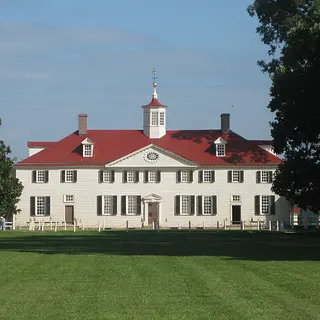
The American Preservation Movement's Founding Mother
In contemporary photographs and portraits, she looks—there’s no other word for it—sweet, like a middle-aged Melanie in a real-life Gone with the Wind. She was small and frail (a childhood riding accident permanently injured her spine), but her physical infirmities masked a firm determination. If she hadn’t been tough, she couldn’t have become the mother of the American preservation movement.
Ann Pamela Cunningham stepped to the forefront of preservation history in December 1853, when a Charleston, South Carolina, newspaper printed an article she had written decrying the sorry condition of George Washington’s home, Mount Vernon. Years of neglect had left the estate a near ruin, its grounds overgrown its noble piazza propped up with crude timbers; moreover, speculators were reportedly eying it as a prime development site. Addressing her appeal “To the Ladies of the South,” Miss Cunningham urged them “to secure and retain the home and grave as a sacred spot for all coming time.”
It was a staggering challenge. Remember: this was the 1850s, when the United States was breaking apart over the issues of slavery and states’ rights. Members of Congress were coming to blows, churches were splitting into northern and southern branches, longstanding relationships among friends and families were dissolving in bitterness. In this storm-wracked soil, Miss Cunningham’s emotional appeal took place.

photo by: Benjamin Brown French/Library of Congress (image #LC-USZ6-1330)
When Ann Pamela Cunningham began her fight for the preservation of the shrine to the father of our country in the mid-1800s, Mount Vernon was in a sorry state.
When her article was widely reprinted, committees of supporters sprang up on both sides of the Mason-Dixon Line. An organization—the Mount Vernon Ladies’ Association—was chartered, and America’s first nationwide preservation campaign was launched. Refusing to be daunted by the widening chasm of sectionalism, Miss Cunningham and her ladies worked quietly and steadily toward their goal. Finally, on February 22, 1860—George Washington’s 128th birthday—they took triumphant possession of Mount Vernon. They’ve owned it ever since.
Miss Cunningham taught us much of what we know about how preservation works. Her example set the course of the movement for several decades, inspiring groups all over the country to restore the homes of the Founding Fathers as shrines where citizens could refresh and reinvigorate themselves at the wellsprings of patriotism. She showed preservationists how to build a grassroots organization. She pioneered the celebrity fundraiser: Famed orator Edward Everett raised thousands of dollars for the campaign with a rousing two-hour speech on Washington that he delivered 139 times. Perhaps most important, she taught us that saving the nation’s heritage transcends politics, that preservation can be a healing force, a standard around which all sorts of people can rally. It’s a lesson we’ve forgotten and relearned many times in the past century.
Stay connected with us via email. Sign up today.

photo by: ctj71081/Flickr/CC BY-SA 2.0
Thanks to Cunningham's efforts, gardens and buildings at Mount Vernon were restored to their glory.
At her retirement in 1874, Miss Cunningham wrote: “Ladies, the home of Washington is in your charge… Let no irreverent hand change it; no vandal hand desecrate it with fingers of—progress!... Let one spot in this grand country of ours be saved from change!”
Despite her plea, Mount Vernon has changed in many ways. Gardens and outbuildings have been reconstructed. Interiors have been repainted and refurnished numerous times, reflecting advances in the pursuit of historical accuracy. Interpretive programs have been revised to present a truer, but still evolving, picture of the past. More than a century after its incredible rescue, Mount Vernon is America’s second most famous house, a place of pilgrimage, an icon—but still (and probably forever) a work in progress.
I’ve never seen Miss Cunningham’s grave, but readers have confirmed what I had imagined: she lies under a modest tombstone in her native South Carolina. Her true monument, of course, stands on the banks of the Potomac. Now, as vacation season looms, tourists will soon be swarming over the grounds, lining up to troop through the once-shabby rooms, photographing one another in front of the piazza that nearly collapsed.
Most of these visitors have never heard of Ann Pamela Cunningham; they don’t realize that August 15 will mark the 200th anniversary of her birth. They don’t know—as we, her heirs, do—that in the process of saving something wonderful she created something even better.
This essay was originally published as "Founding Mother" in the July/August 1996 issue of Preservation magazine.

.webp)
